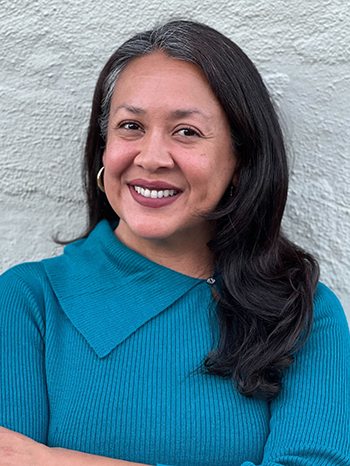Beyond the Boom: Why California Must Prepare for Future Climate Funding—Even as Federal Dollars Dry Up
"As we prepare for the challenges of this new federal administration, simply defending against deregulation and disinvestment will not be enough. This moment demands more. We must collectively double down—investing not just in mitigating harm, but in building long-term community power, strengthening partnerships, expanding technical resources, and ensuring nascent climate efforts that got underway during the previous Administration have the lasting power to actually deliver meaningful benefit." - Kirin Kumar, NCG
The fight for climate justice is at a critical crossroads. While California has positioned itself as a global leader in addressing the climate crisis, the impacts of climate change are accelerating—hitting the state’s most vulnerable communities the hardest. Decades of underinvestment have made it difficult for frontline communities to scale the bold solutions needed to meet this moment, deepening already stark economic, social, and health disparities. At the federal level, progress made under the Biden Administration is under threat, with efforts to roll back environmental protections, eliminate historic federal funding, and even criminalize organizations working toward climate resilience. Now more than ever, California, and particularly the philanthropic sector, must not only hold the line but also push forward, ensuring that the path toward a Just Transition gains momentum rather than stalls.
This strategy must prioritize both defense and offense: shielding communities from environmental injustices while actively supporting community-led strategies that can tap into state and private funding. Philanthropy has a unique opportunity to provide the flexible, multi-year investments needed to build partnerships, shape policies, and develop projects that deliver lasting economic benefits for—and in collaboration with—residents. In other words, communities aren’t letting up on the (electric) pedal, and philanthropy must be ready to power their momentum.
California’s Head Start Includes Major Readiness Gaps
With the unprecedented influx of federal funding through the Inflation Reduction Act (IRA) and the Infrastructure Investment and Jobs Act (IIJA), California has had—and in some areas still has—a historic opportunity to accelerate its fight against the climate crisis. Climate strategies enjoy broad public support and align with both national and global economic trends. Even in a year marked by political division over equity-centered ballot initiatives, Californians overwhelmingly backed a $10 billion climate bond, demonstrating a rare bipartisan mandate for climate investment.
However, gaps in readiness, capacity, and coordination have made it difficult to fully capitalize on these resources. A 2024 Union of Concerned Scientists report found that California is falling short of the Biden Administration’s Justice40 goals, which aim to direct at least 40% of climate investments to historically disinvested communities. These shortfalls are not inevitable failures of the system but rather the result of chronic underinvestment across the public, private, and philanthropic sectors in building the equitable conditions necessary for communities to drive and implement climate solutions. Much like the COVID-19 pandemic exposed deep fault lines in healthcare and emergency response, the availability of significant climate and infrastructure funding has revealed structural weaknesses in scaling energy, community development, and climate resilience projects across the state.
As we prepare for the challenges of this new federal administration, simply defending against deregulation and disinvestment will not be enough. This moment demands more. We must collectively double down—investing not just in mitigating harm, but in building long-term community power, strengthening partnerships, expanding technical resources, and ensuring nascent climate efforts that got underway during the previous Administration have the lasting power to actually deliver meaningful benefit.
Understanding & Addressing Barriers
If the goal of resisting federal de-funding is to secure lasting investments in communities, and we acknowledge that a transition to climate-centered economies is inevitable, then we must also confront the structural barriers that have long restricted access and opportunity in historically under-resourced communities. Without addressing these deep-rooted equity challenges, we risk pouring more money into a broken system—one that continues to leave the most impacted communities behind. To ensure climate funding leads to real, transformative change now and well into the future, we must first understand and dismantle the obstacles that prevent communities from fully benefiting from these critical investments.
- Investing in community-led project planning: The rapid deployment of federal funds came with complex provisions and required communities to have shovel-ready projects, but many lacked a sufficient “pipeline.” Resources to develop shared priorities, plan, environmentally clear projects, align capital and policies, and develop broad community support are requisite to enable project implementation at scale. Essential to all of this are the cast of characters between nonprofits, local government, businesses, financial partners, and others working collaboratively to coordinate and cultivate the enabling environment for success. The Center for Community Investment outlines a compelling framework for this called Capital Absorption. Communities that have benefited from past investments in their capacity and have had the time and resources to develop proactive strategies are far more likely to be successful in attracting funding for implementation. Over the next four years, as federal funding is unlikely to expand, philanthropy must redouble efforts to enable readiness in under-resourced communities if our collective long-term objective is to secure more funding for these kinds of initiatives under future administrations.
- Navigating Complicated Funding Mechanisms: While direct pay provisions unlocked significant resources for organizations historically expected from income tax, implementation funds flowing as tax credits created working capital issues. This structure favors established projects with access to upfront capital. As the Trump administration rolls back funding, philanthropy has a critical role to play not just in enabling project continuity but in addressing the deeper structural gaps that determine who has access to working capital and who doesn’t. Ensuring communities have flexible funding to sustain momentum when federal dollars are delayed or withdrawn is essential. But beyond short-term support, long-term strategies are needed to build sustainable local capital, endow organizations with the financial resilience to leverage and deploy investment on their own terms, and scale infrastructure like CDFIs and Community Development Corporations.
- Scaling Funding Infrastructure for Community Benefits: The influx of federal resources beginning in 2021 put significant pressure on communities to very quickly negotiate community benefits and put forward community benefits plans. More generally, community organizations in particular experienced fatigue trying to engage meaningfully across projects, navigate potential public-private partnerships, and put forward projects of their own. As more and more dollars are likely to flow through private developers and even foreign entities in an increasingly deregulated environment under the Trump Administration, resources to navigate the multi-year engagement and community benefits processes are more critical now than ever.
A Strategic Moment for California
A recent report, Resourcing Resilience, authored by Philanthropy California and the Nonprofit Finance Fund, outlines key recommendations for both the public and philanthropic sectors to address community needs in advancing climate resilience. Coupled with this recent Philanthropy California Call to Action, these insights should serve as a foundation for strategies that enhance capacity, collaboration, and readiness for implementation. By taking proactive steps now, California can ensure that when the next wave of climate funding arrives, our communities are prepared to lead.






